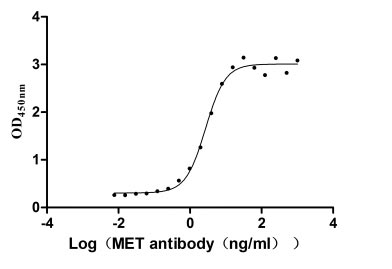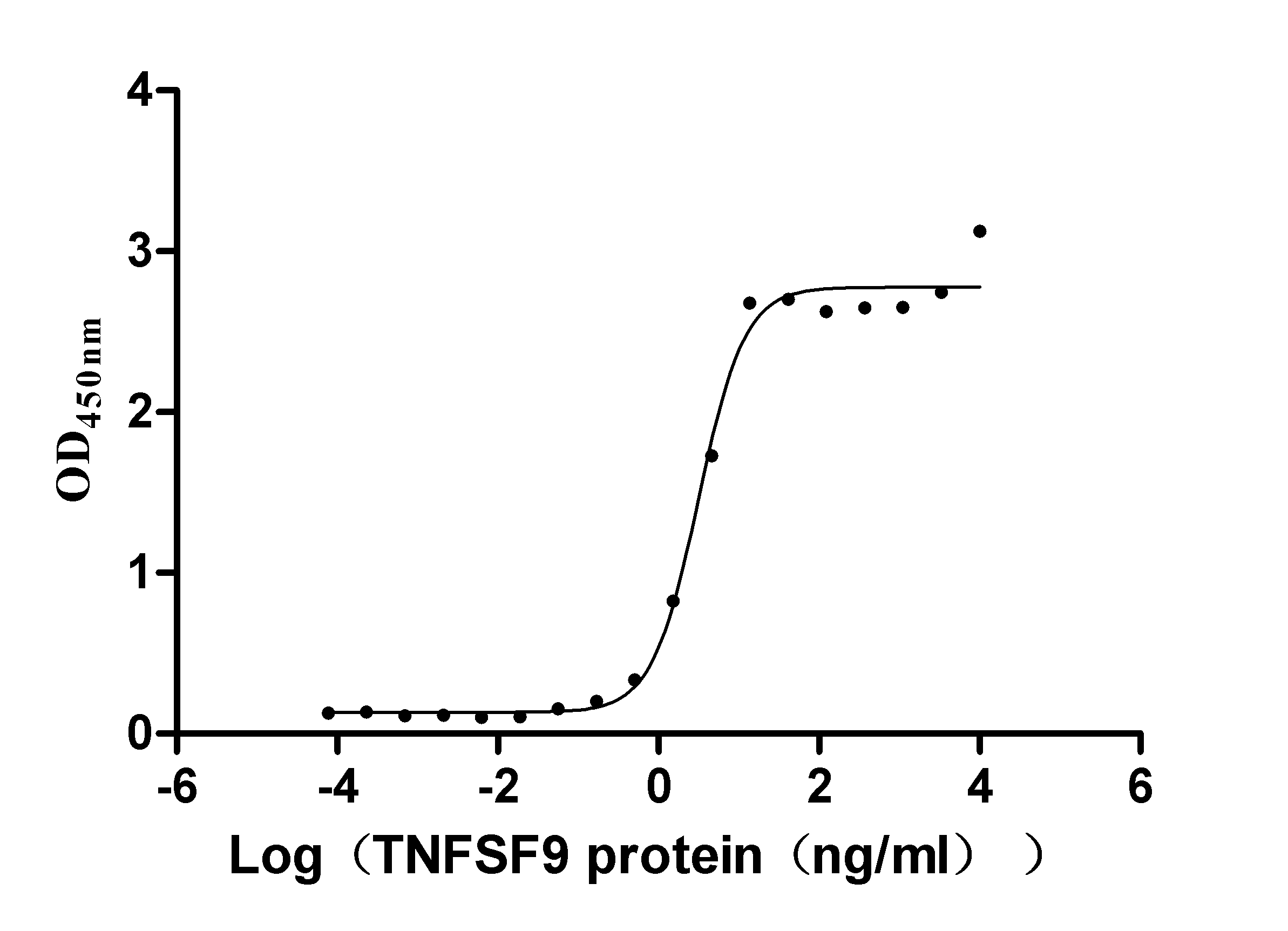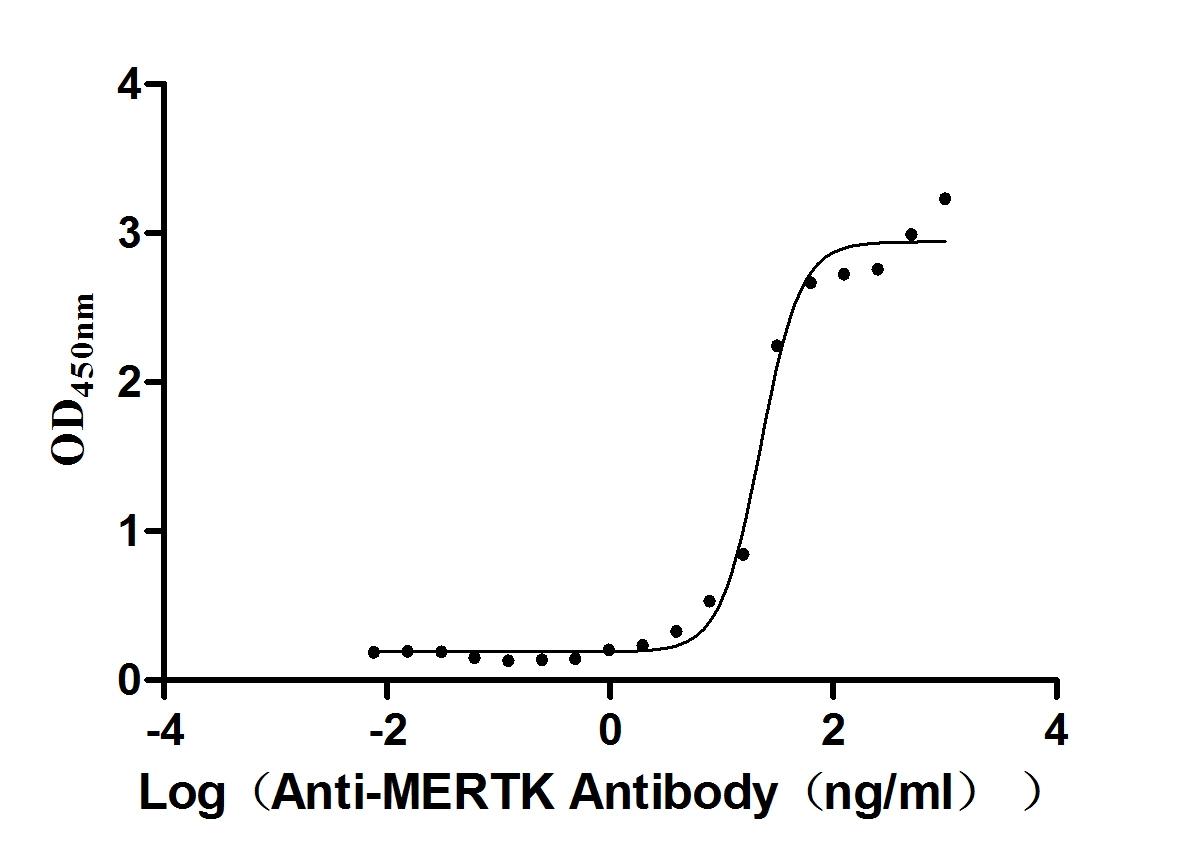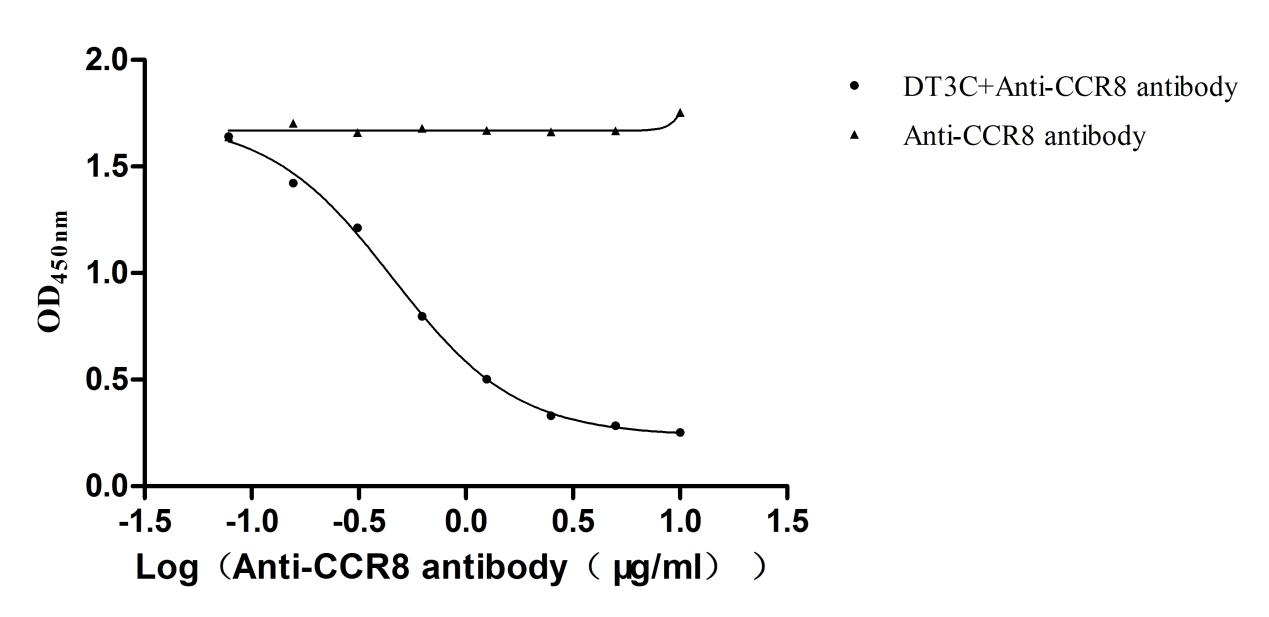Recombinant Human LIM domain-containing protein 1 (LIMD1)
-
货号:CSB-YP883381HU
-
规格:
-
来源:Yeast
-
其他:
-
货号:CSB-EP883381HU
-
规格:
-
来源:E.coli
-
其他:
-
货号:CSB-EP883381HU-B
-
规格:
-
来源:E.coli
-
共轭:Avi-tag Biotinylated
E. coli biotin ligase (BirA) is highly specific in covalently attaching biotin to the 15 amino acid AviTag peptide. This recombinant protein was biotinylated in vivo by AviTag-BirA technology, which method is BriA catalyzes amide linkage between the biotin and the specific lysine of the AviTag.
-
其他:
-
货号:CSB-BP883381HU
-
规格:
-
来源:Baculovirus
-
其他:
-
货号:CSB-MP883381HU
-
规格:
-
来源:Mammalian cell
-
其他:
产品详情
-
纯度:>85% (SDS-PAGE)
-
基因名:
-
Uniprot No.:
-
别名:AW822033; D9Ertd192e; LIM domain-containing protein 1; LIM domains containing 1; LIMD1; LIMD1_HUMAN; OTTHUMP00000164657; OTTHUMP00000210317; rCG_25194
-
种属:Homo sapiens (Human)
-
蛋白长度:full length protein
-
表达区域:1-676
-
氨基酸序列MDKYDDLGLE ASKFIEDLNM YEASKDGLFR VDKGAGNNPE FEETRRVFAT KMAKIHLQQQ QQQLLQEETL PRGSRGPVNG GGRLGPQARW EVVGSKLTVD GAAKPPLAAS TGAPGAVTTL AAGQPPYPPQ EQRSRPYLHG TRHGSQDCGS RESLATSEMS AFHQPGPCED PSCLTHGDYY DNLSLASPKW GDKPGVSPSI GLSVGSGWPS SPGSDPPLPK PCGDHPLNHR QLSLSSSRSS EGSLGGQNSG IGGRSSEKPT GLWSTASSQR VSPGLPSPNL ENGAPAVGPV QPRTPSVSAP LALSCPRQGG LPRSNSGLGG EVSGVMSKPN VDPQPWFQDG PKSYLSSSAP SSSPAGLDGS QQGAVPGLGP KPGCTDLGTG PKLSPTSLVH PVMSTLPELS CKEGPLGWSS DGSLGSVLLD SPSSPRVRLP CQPLVPGPEL RPSAAELKLE ALTQRLEREM DAHPKADYFG ACVKCSKGVF GAGQACQAMG NLYHDTCFTC AACSRKLRGK AFYFVNGKVF CEEDFLYSGF QQSADRCFLC GHLIMDMILQ ALGKSYHPGC FRCVICNECL DGVPFTVDSE NKIYCVRDYH KVLAPKCAAC GLPILPPEGS DETIRVVSMD RDYHVECYHC EDCGLELNDE DGHRCYPLED HLFCHSCHVK RLEKRPSSTA LHQHHF
-
蛋白标签:Tag type will be determined during the manufacturing process.
The tag type will be determined during production process. If you have specified tag type, please tell us and we will develop the specified tag preferentially. -
产品提供形式:Lyophilized powder
Note: We will preferentially ship the format that we have in stock, however, if you have any special requirement for the format, please remark your requirement when placing the order, we will prepare according to your demand. -
复溶:We recommend that this vial be briefly centrifuged prior to opening to bring the contents to the bottom. Please reconstitute protein in deionized sterile water to a concentration of 0.1-1.0 mg/mL.We recommend to add 5-50% of glycerol (final concentration) and aliquot for long-term storage at -20℃/-80℃. Our default final concentration of glycerol is 50%. Customers could use it as reference.
-
储存条件:Store at -20°C/-80°C upon receipt, aliquoting is necessary for mutiple use. Avoid repeated freeze-thaw cycles.
-
保质期:The shelf life is related to many factors, storage state, buffer ingredients, storage temperature and the stability of the protein itself.
Generally, the shelf life of liquid form is 6 months at -20°C/-80°C. The shelf life of lyophilized form is 12 months at -20°C/-80°C. -
货期:Delivery time may differ from different purchasing way or location, please kindly consult your local distributors for specific delivery time.Note: All of our proteins are default shipped with normal blue ice packs, if you request to ship with dry ice, please communicate with us in advance and extra fees will be charged.
-
注意事项:Repeated freezing and thawing is not recommended. Store working aliquots at 4°C for up to one week.
-
Datasheet :Please contact us to get it.
靶点详情
-
功能:Adapter or scaffold protein which participates in the assembly of numerous protein complexes and is involved in several cellular processes such as cell fate determination, cytoskeletal organization, repression of gene transcription, cell-cell adhesion, cell differentiation, proliferation and migration. Positively regulates microRNA (miRNA)-mediated gene silencing and is essential for P-body formation and integrity. Acts as a hypoxic regulator by bridging an association between the prolyl hydroxylases and VHL enabling efficient degradation of HIF...显示更多
-
基因功能参考文献:
- our data also suggests the importance ofLIMD1 and CDC25A in conjunction with HPV for use as diagnostic and prognostic markers of HNSCC, whereas RBSP3 as a prognostic marker only. PMID: 29672635
- LIMD1 coordinates the assembly of an AGO-TNRC6 containing miRISC complex by binding both proteins simultaneously at distinct interfaces. PMID: 28683311
- These results suggested that LIMD1 is a novel BRCA2-interacting protein and is involved in the centrosome localization of BRCA2 and suppression of LIMD1, causing abnormal cell division in EC cells. PMID: 27656835
- Thus, the LIMD1-MYBL1 Index had considerable clinical value for DLBCL subtype classification and prognosis. PMID: 25940947
- Cyclic stretch is associated with a JNK-dependent increase in binding of a LATS inhibitor, LIMD1, to the LATS1 kinase and that reduction of LIMD1 expression suppresses the activation of YAP by cyclic stretch. PMID: 25127217
- LIMD1 prevents retinoblastoma phosphorylation and downregulates of E2F1 protein and blocks entry of cells into S-phase. PMID: 24523249
- PU.1 is a major transcriptional activator of LIMD1 PMID: 21402070
- LIMD1 inactivation as primary event than inactivation of RB1 in head and neck squamous cell carcinoma development. PMID: 20226061
- LIMD1 is a tumor-suppressor gene, the protein product of which functionally interacts with pRB and the loss of which promotes lung carcinogenesis PMID: 15542589
- analysis of hLIMD1 gene variants in breast cancer PMID: 17889706
- These results suggest that some breast tumors have altered expression of LIMD1 RNA and that LIMD1 may be involved in cell anchoring via focal adhesions and in the cell cycle, particularly during mitosis. PMID: 18439753
- study demonstrates that LIMD1 represents a novel prognostic marker for breast cancer. Combined with the fact that LIMD1 expression is downregulated in lung cancers this clearly indicates that LIMD1 may represent a critical tumor suppressor gene PMID: 18712738
- LIMD1 is a validated chromosome 3p21.3 tumor-suppressor gene involved in human lung cancer development. PMID: 19060205
收起更多
-
亚细胞定位:Cytoplasm. Nucleus. Cytoplasm, P-body. Cell junction, adherens junction. Cell junction, focal adhesion. Note=Shuttles between cytoplasm and nucleus but is localized predominantly to the cytoplasm. Found in the nucleus but not nucleoli. Colocalizes with VCL in the focal adhesions. Down-regulation and/or elimination of its expression from the nucleus of neoplastic cells correlates strongly with poor patient prognosis and aggressive forms of breast carcinoma. Conversely, strong nuclear localization correlates with low-tumor grade and better patient prognosis.
-
蛋白家族:Zyxin/ajuba family
-
组织特异性:Expressed in normal and breast cancer tissues (at protein level). Ubiquitous.
-
数据库链接:
HGNC: 6612
OMIM: 604543
KEGG: hsa:8994
STRING: 9606.ENSP00000273317
UniGene: Hs.193370




















